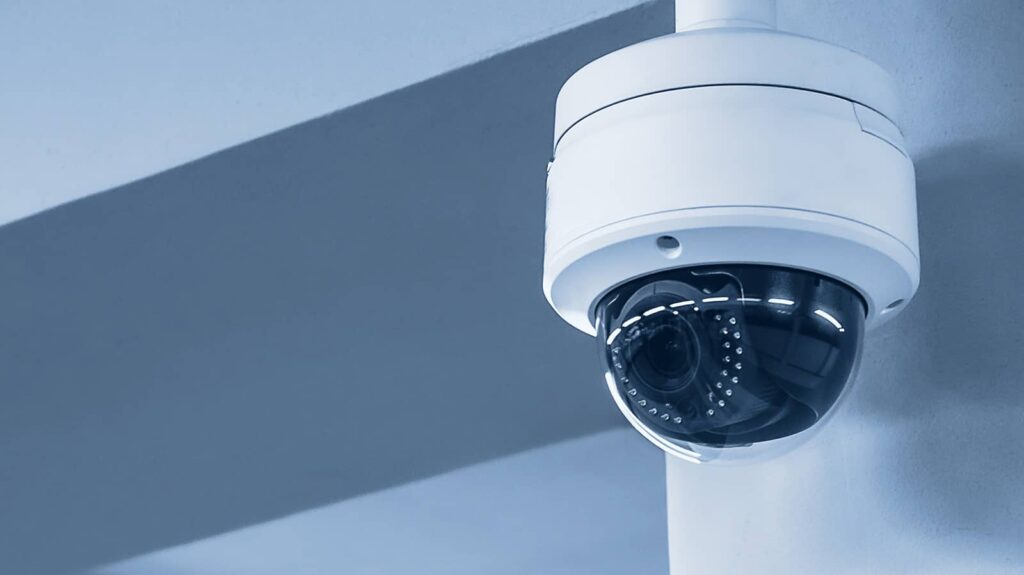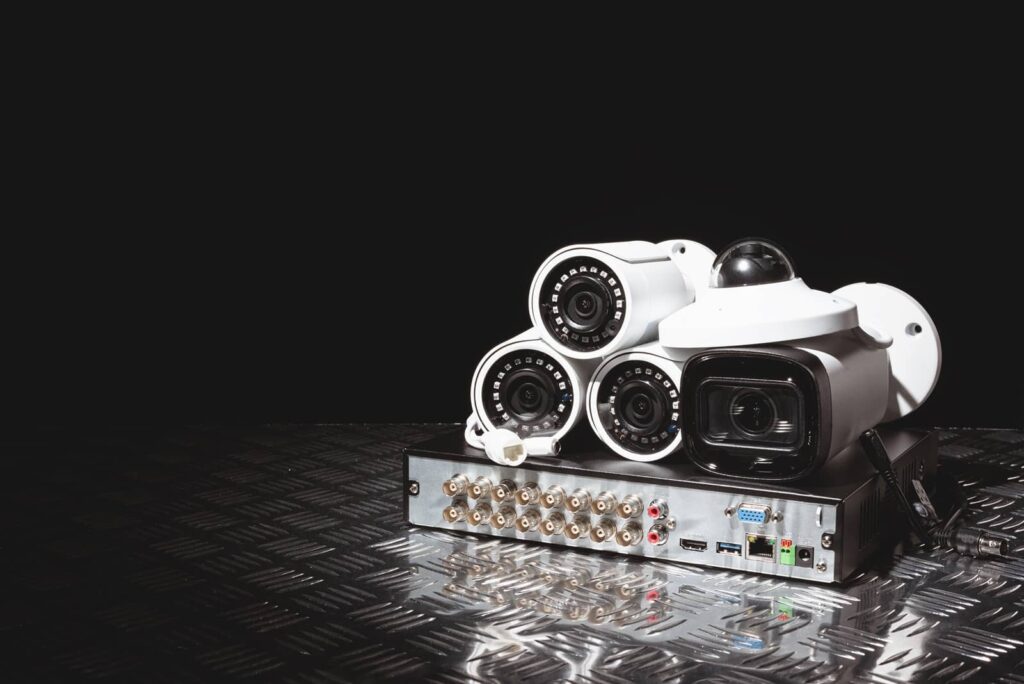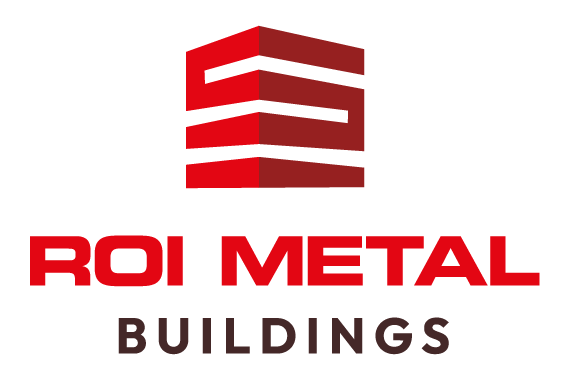When it comes to storing your valuables, security is one of the top concerns for anyone using a self-storage facility. Nobody wants to worry about their belongings being exposed to theft or damage. That’s why it’s crucial to understand the various self-storage security features that can enhance the safety of these metal buildings. From strong locks to high-tech surveillance systems, the choices you make have a significant impact on the protection offered. In this article, we’ll break down essential security aspects that every facility should consider. No need for fancy jargon, just straightforward insights you’ll find helpful in keeping your possessions safe and secure. Ready to dive into what makes self-storage buildings genuinely secure? Let’s explore!
When considering a self-storage metal building, look for robust security features such as sturdy locks (like disc locks), video surveillance systems, alarmed units, and restricted access hours. These features enhance protection against unauthorized access and provide peace of mind for customers storing valuable items.

Overview of Self-Storage Security Features
The foundation of effective self-storage security relies heavily on understanding the integral elements that contribute to a secure facility. Metal buildings have become increasingly popular in the self-storage industry due to their durability and ease of maintenance, but security features are not just about materials. They start with the choice of construction materials and extend to the wise integration of advanced technologies and strategic planning. This article is a comprehensive guide covering all aspects of self-storage metal building security.
Security measures such as access control and surveillance cameras are crucial in enhancing customer safety. These measures not only ensure tenant safety but also help maximize rental income and secure the business’s long-term success.
Introduction to the Storage Industry
The self-storage industry has experienced significant growth in recent years, driven by increasing demand for secure and flexible storage solutions. Self-storage facilities provide a convenient and accessible way for individuals and businesses to store their belongings, whether for personal or commercial use. The industry offers a range of storage options, including climate-controlled storage units, vehicle storage, and temporary storage solutions. As the industry continues to evolve, self-storage facilities are incorporating advanced security features and technologies to enhance the storage experience and provide peace of mind for their customers.
Key Aspects of Self-storage Security
1. Structural Integrity
Utilizing high-quality metal for construction ensures a strong defense against intruders and extreme weather events. When we think about a secure storage unit, steel often comes to mind, and for good reason: its impressive strength is crucial in preventing break-ins. The robust nature of metal structures provides peace of mind for owners and renters alike, knowing that their belongings are well protected from both human threats and nature’s rage, like heavy winds or torrential rain.
2. Technological Integration
In addition to sturdy construction, incorporating state-of-the-art security technologies significantly enhances protection against theft and vandalism. The use of electronic gate systems as part of effective access control measures ensures controlled access through unique codes or cards, allowing for monitoring of entry and exit times, which enhances security and minimizes the risk of unauthorized access.
For instance:
- Surveillance cameras: These have become indispensable tools in modern self-storage facilities. They deter criminal activity by making it clear that all actions are being recorded. Studies show that properties equipped with proactive surveillance see up to a 50% decrease in criminal incidents. Adequate lighting not only improves visibility to deter intruders but also contributes to energy efficiency, ensuring that facilities remain well-lit without incurring excessive energy costs.
- Alarm systems: These serve as immediate alert systems, notifying managers of unauthorized access with impressive response rates—often around 90%.
This dual approach of physical fortification combined with technology creates a formidable barrier against would-be thieves.
3. Access Control
Effective access control is another cornerstone of secure self-storage facilities. Implementing an access control system, such as a keycard or biometric entry, ensures that only authorized personnel can gain access to units. These systems ensure that only authorized individuals can access the units, thereby enhancing security against unauthorized access. By restricting entry based on unique identifiers—like fingerprints or access codes—facility owners can significantly reduce unauthorized access. Such systems protect customers’ items and foster a sense of trust among users who rely on these services during their transitions or moves.
The integration of robust constructions paired with innovative technologies and controlled accessibility is paramount for safeguarding storage facilities, ensuring that only authorized individuals can gain entry.
As we transition to discuss construction methods, we will see how materials and design choices further influence these essential structures’ overall safety and durability.
Robust Construction and Materials
When it comes to self-storage units, strong materials stand as the first line of defense against potential security threats. Choosing to construct with high-grade steel is a smart choice—not only does it offer exceptional strength, but it also provides resilience against various adverse conditions. Metal structures ensure that your investment remains intact over time, enduring harsh weather without succumbing to the elements. Additionally, weather resistance is crucial in ensuring the longevity and reliability of metal buildings.
The two most common materials in metal building construction are galvanized steel and stainless steel. Galvanized steel panels are specially treated to resist rust and corrosion, enhancing the longevity of the facility. With this durability, even in challenging environments such as coastal or wet conditions, these panels can last significantly longer than their traditional counterparts. This results in reduced maintenance costs and less frequent need for repairs or replacements. Environmental factors, such as temperature fluctuations and humidity levels, can also affect the durability of these materials, making it essential to choose high-quality options.
By investing in quality materials, you’re not just securing your units; you’re ensuring peace of mind for yourself and your clients.
Strength and Durability
Their high tensile strength allows stainless steel constructions to bear heavy loads without sacrificing integrity, making them ideal for large storage units that may house bulky items. Stainless steel constructions can also withstand extreme temperature fluctuations, ensuring that items are safely stored regardless of changing external conditions. On the other hand, aluminum, while lighter than steel, offers remarkable durability as well. It resists corrosion effectively, making it an excellent choice for climate-sensitive applications. However, compared directly, steel’s overall weight-bearing capacity tends to lead in scenarios where strength is essential.
| Material | Benefit |
|---|---|
| Galvanized Steel | Rust and corrosion resistance |
| Stainless Steel | High tensile strength |
| Aluminum | Lightweight and durable |
Furthermore, let’s not underestimate the importance of foundation types when considering robustness. Concrete slab foundations provide immense stability; they are typically 4 to 6 inches thick and help anchor the building securely to the ground. This structural integrity protects stored items from environmental hazards like flooding or shifting earth.
Utilizing superior construction materials ensures immediate safety measures and enhances the overall value of metal buildings in the long run. As you plan a self-storage facility, consider how these choices positively impact both short-term convenience and long-lasting structural soundness. Building with high-quality materials today will pay dividends through increased customer trust and satisfaction tomorrow.
As we explore ways to enhance security further, it’s crucial to focus on implementing effective barriers at entry points throughout your facility.
Advanced Lock and Door Security
The integrity of your self-storage facility hinges significantly upon the quality of its locks and doors; these elements form the first line of defense against unauthorized access. It’s essential to recognize that a secure lock isn’t just a mere accessory—it embodies a commitment to the safety of renters’ valuable possessions. By utilizing individual unit alarms for enhanced security, facilities can further protect each storage unit individually, providing an additional layer of security.
By utilizing advanced lock technologies, facilities can deter theft and boost renter confidence in their security measures, ensuring maximum security for all stored items.
Types of Locks
When considering the types of locks, a few stand out due to their effectiveness. For instance, disc locks are noteworthy for their robust design, proving far superior to traditional padlocks. In fact, industry reports suggest that disc locks can reduce break-ins by up to 80% compared to standard options. This substantial reduction underscores their importance in protecting assets stored within these units.
Using advanced locks is crucial in maintaining a secure storage facility. Electronic gate systems with unique keypad codes and on-site security staff further enhance security by preventing unauthorized access and ensuring that valuable assets are protected around the clock.
As a benchmark, ROI Metal Buildings’ best-selling storage units come equipped with disc locks as standard, ensuring that our customers enjoy peace of mind from the moment they store their items.
Furthermore, electronic locks offer an entirely different approach to security. These locks provide an additional layer of protection with keypads or biometric systems that are much harder to tamper with. Imagine entering a unique code or even using your fingerprint to unlock your unit—this level of security can drastically minimize the chances of unauthorized access. Facilities equipped with electronic locking systems usually report higher customer satisfaction as well, thanks in part to the convenience they offer.
Considering advanced locking solutions can give both facility operators and customers greater confidence in their choices, reminding them that safety doesn’t have to be complicated.
Integrating surveillance systems serves as the facility’s eyes and ears, complementing advanced lock technologies and creating a multi-faceted defense strategy.
Comprehensive Surveillance Systems

Surveillance technology has become an indispensable component of self-storage facilities. Its primary purpose has not changed: to dissuade potential intruders and offer invaluable evidence when incidents occur. However, understanding the nuances of these systems can significantly impact their effectiveness. For instance, strategically placed cameras monitor activity and create an atmosphere where unauthorized access feels less appealing. Consulting with local authorities when installing surveillance systems can help ensure compliance with specific permitting and zoning requirements.
Additionally, it is crucial to comply with local regulations for surveillance system installations to avoid potential legal issues and ensure a smoother setup process.
Camera Types
When selecting surveillance cameras for a self-storage facility, a diverse range of options is available. Choosing the right cameras is essential for ensuring adequate coverage.
1. HD Security Cameras
Opting for high-definition cameras is crucial, particularly those equipped with night vision capabilities. This combination allows for round-the-clock monitoring, maintaining visibility even in low-light conditions. High-definition resolution ensures that should an incident occur, the footage captured will offer clarity and detail that can aid law enforcement in investigations. HD security cameras are essential for protecting valuable items, giving customers peace of mind that their belongings are safe from theft or damage. At Roi Metal Buildings, many clients have found success incorporating systems like the Hikvision Darkfighter, which excels in performance under challenging lighting situations.
2. PTZ Cameras
Pan-tilt-zoom (PTZ) cameras also warrant consideration due to their versatility. These cameras can cover extensive areas while having the capability to focus on particular sections as needed. This characteristic makes them ideal for monitoring large self-storage facilities where comprehensive observation is required without sacrificing precision.
Yet, a robust surveillance system extends beyond just having cameras. It involves integrating technologies like motion sensors and alarm systems to form a cohesive unit that actively protects your property.
It’s important to remember that each surveillance option serves a unique role in fortifying your overall security framework.
Enhancing Communication with Remote Monitoring
A significant advancement worth noting is the ability to utilize real-time video surveillance alongside alert systems. This means facility managers can constantly monitor operations and receive instant notifications about unusual activities or breaches. The advent of mobile applications allows users to access live feeds from their smartphones, creating peace of mind while they are away.
Remote monitoring not only enhances security but also provides customers peace by assuring them that their belongings are well-protected in a secure environment.
As we recognize the value of these comprehensive systems, highlighting how regular maintenance and updates can maximize their effectiveness over time is essential. Keeping software up-to-date ensures that all features function efficiently, enhancing your facility’s security resilience against evolving threats.
Implementing these surveillance techniques sets the stage for exploring additional safety innovations that further bolster protection measures within self-storage environments.
State-of-the-Art Alarm Systems
Alarm systems play a crucial role in protecting self-storage facilities; they act as rapid response mechanisms to potential security breaches. A well-designed alarm system doesn’t just trigger an alert; it can serve as a deterrent. Potential intruders are less likely to target that site when they see visible alarm equipment. Investing in advanced alarm systems is a smart choice for any self-storage facility owner concerned about safety and loss prevention.
Additionally, installing security alarms for each individual unit is essential. These alarms not only protect each unit but also provide real-time alerts to facility managers about unauthorized access, ultimately enhancing overall security and tenant trust.
Alarm Features
One of the foundational components of an effective alarm system is motion detectors. These devices are strategically placed throughout the property to monitor areas where unauthorized access might occur. If someone enters these areas during off-hours, the motion detectors immediately send alerts to facility managers or law enforcement. Imagine you’re away from your self-storage site, perhaps managing multiple locations or enjoying some well-deserved time off. A well-placed motion detector ensures peace of mind by keeping an eye on things—even when you’re not.
Facilities equipped with motion detectors experience significantly decreased unauthorized entry incidents. Research suggests that sites with integrated alarm systems report break-in attempts reduced by over 40%. This substantial drop underscores the importance of these investments.
Another critical feature is door alarms. These simple yet effective systems safeguard against unauthorized entry through doors—one of the most vulnerable points in any facility. Studies indicate that facilities equipped with door alarms witness a staggering 50% reduction in break-ins compared to those without. This statistic illustrates their effectiveness and provides an extra layer of reassurance for tenants who entrust their belongings to self-storage facilities.
It’s advisable to select alarm systems capable of real-time remote notifications. With modern technology, many advanced systems offer connectivity via smartphone apps, enabling facility managers to receive immediate alerts no matter where they are located. For instance, if a door alarm is triggered while you’re at home or attending a business meeting, you can swiftly assess the situation without being physically present at the site.
While these individual features are essential, understanding how they integrate into an overall protective strategy is vital for enhancing any facility’s security posture.
Professional Installation
Professional installation is a critical aspect of setting up a self-storage facility. It requires careful planning, expertise, and attention to detail to ensure that the facility is secure, functional, and meets the needs of its customers. A professional installation team can help design and build a customized storage solution that incorporates robust security features, such as access control systems, surveillance cameras, and secure locks. By investing in professional installation, self-storage facility owners can ensure that their business is well-equipped to provide a safe and secure storage environment for their customers.
Importance of Expert Installation
Expert installation is essential for ensuring that a self-storage facility is constructed with high-quality materials and built to last. A professional installation team can help identify potential security concerns and provide solutions to mitigate them. For example, they can recommend the use of sturdy locks, such as disc locks or cylinder locks, to secure individual storage units. Additionally, they can design a perimeter fencing system that provides an effective physical barrier against unauthorized access. By prioritizing expert installation, self-storage facility owners can protect their investments and provide a secure environment for their customers.
Evaluating Overall Facility Security
When thinking about the security of a self-storage facility, it’s crucial to take a close look at the entire structure and how its elements interact. For instance, the facility layout plays a significant role in enhancing or diminishing stored units’ security. Securing business inventory through specialized storage solutions is essential for effective inventory management.
Designing the layout effectively can minimize blind spots, allowing for uninterrupted surveillance by strategically placing cameras to cover all critical areas. This often involves thoughtful planning; you might want to visualize how customers navigate through the space, spotting potential vulnerabilities along access routes. By addressing these areas proactively, facility managers can create an environment that is not just secure but feels secure to clients as well. Additionally, the layout can be designed to meet various storage needs, ensuring that the facility can adapt to changing requirements.
While structuring the layout is vital, having sufficient personnel on-site significantly elevates the level of protection.
Security Staffing
Employing dedicated security personnel can be a game-changer. Their presence reassures customers and acts as a deterrent against malicious activities. Regular patrols are crucial; imagine having a vigilant guard roaming around during busy hours, ready to respond to any irregularities immediately.
In the self-storage business, security staffing plays a pivotal role in maintaining operational efficiency and ensuring customer trust.
Not only do they guard against unauthorized access, but they also perform routine checks that ensure everyone adheres to access control protocols. Employees trained in identifying suspicious behavior add an extra layer of vigilance, making customers feel protected while simultaneously facilitating smooth operations.
In addition to physical security and proper staffing, fostering customer involvement is equally important.
Customer Education
“A community that’s informed is a safer community.”
Educating customers on best practices for securing their own units is vital. Encourage them to use high-quality personal locks in addition to any facility-provided security measures. This way, customers not only feel empowered to protect their belongings but also support the overall safety of the facility. Educating customers also enhances their self-storage experience by making the process seamless and user-friendly.
Consider hosting workshops or sending out newsletters with tips on how to choose effective locks and what items shouldn’t be stored without insurance coverage. This kind of engagement deepens trust and builds a sense of community where customers know they play an active role in maintaining security.
Each element—layout design, staffing choices, and customer education—works together harmoniously to create a robust security infrastructure for self-storage facilities. To understand better how to further enhance this infrastructure, let’s explore the spectrum of available security features that can bolster safety even more.
Perimeter Security
Perimeter security is a top priority for self-storage facilities, as it provides the first line of defense against unauthorized access. A well-designed perimeter security system should include features such as sturdy fencing, gates, and access control systems. The use of CCTV cameras and motion detectors can also provide extra protection by monitoring suspicious activity and alerting security staff to potential threats. Furthermore, adequate lighting is crucial for maintaining a secure environment, as it can help deter break-ins and provide clear visibility for security cameras. By investing in a comprehensive perimeter security system, self-storage facilities can ensure that their customers’ belongings are safe and secure.
Choosing the Best Security Features
The optimal security configuration for a self-storage metal building hinges on several key components that must be carefully selected. From securing user access with electronic gate systems to installing surveillance cameras, every feature contributes to a comprehensive security strategy that meets both safety and operational needs. Modular designs are particularly cost-effective, allowing for adjustments and expansions as needs change, thus preventing the necessity of purchasing an entirely new storage unit.
In addition to these features, motion-activated alarms can be the ideal solution for enhancing unit safety by addressing specific security challenges.
Furthermore, the aesthetic appeal of gable roof buildings not only maximizes vertical storage capacity but also enhances the overall look and charm of the storage unit, making it a preferable choice for those who prioritize both functionality and visual appeal.
Customizing Security
Assessing Needs
A critical first step in customized security is conducting a thorough audit of your facility. This means analyzing potential vulnerabilities unique to your layout. For instance, if you have second-story units, they might seem more secure because of their height, but improper construction could create hidden risks. The goal here is to determine where improvements are necessary—whether it’s enhancing perimeter fencing or upgrading locks on individual units to sturdier disc locks. By taking this methodical approach, you’ll understand which areas require more attention and which security measures would be most effective.
Budget Considerations
When budgeting for security features, finding the right balance between cost and effectiveness is essential. Begin by listing high-impact security measures—such as video surveillance systems or advanced alarm technologies—that will provide the most significant deterrent against theft. Remember, investing in quality security can save costs related to potential losses and repairs down the line. For example, while a basic camera may cost only $200, investing in higher-quality models will significantly enhance monitoring capabilities and reduce long-term risks.
Integrated Solutions
It’s advisable to consider integrated security solutions where different elements—cameras, alarms, and access controls—work synergistically. An integrated system can provide a seamless flow of information and automated responses to security breaches. Picture this: as soon as an alarm is triggered at one of your storage units, surveillance cameras immediately pivot to that specific area while notifying management via smart technology about the breach.
Integrating security features in a self-storage unit is crucial to ensure the safety and protection of stored belongings.
Ensuring all components communicate effectively bolsters security and enhances user satisfaction; customers feel safe knowing their belongings are protected from theft or damage.
Ultimately, a multi-tiered approach combining robust materials like steel construction with advanced technology creates a fortress-like environment where your clients’ valuables remain safe and sound.
Moving forward, remember that being proactive with your facility’s security can yield lasting benefits beyond mere compliance; it can foster trust and confidence amongst customers, encouraging them to choose your storage space repeatedly.
Investing wisely in these top-notch security features will safeguard both your assets and reassure clients seeking reliable storage solutions. To learn more about securing your self-storage facility with our durable metal buildings, visit ROI Metal Buildings or call us at 865-316-9009.



